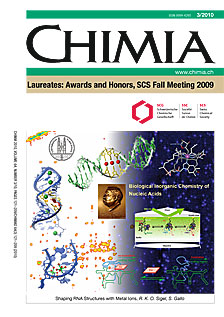Feasibility of Methyl Mercaptane as Probe Molecule for Supported Gold Nanoparticle Surface Area Determination
DOI:
https://doi.org/10.2533/chimia.2010.191Keywords:
Au/tio2, Chemisorption, Methyl mercaptane, Surface areaAbstract
Gold nanoparticles supported on TiO2 were probed by adsorption of methyl mercaptane (MM), and the process was quantified gravimetrically. This method allowed discrimination between weakly adsorbed (physisorbed) and strongly bound (chemisorbed) methyl mercaptane. Strong adsorption of MM occured on exposed Au faces, while low-temperature pre-treatment (30 °C) completely suppressed adsorption of MM on the TiO2 support. The thus obtained high selectivity of MM adsorption on Au enabled characterization of the gold surface area and the resulting values are comparable with other noble metal systems of similar average particle size. The estimated adsorption stoichiometry indicates that the entire Au surface is probed.Downloads
Published
2010-03-31
Issue
Section
Scientific Articles
License
Copyright (c) 2010 Swiss Chemical Society

This work is licensed under a Creative Commons Attribution-NonCommercial 4.0 International License.
How to Cite
[1]
N. van Vegten, P. Haider, M. Maciejewski, F. Krumeich, A. Baiker, Chimia 2010, 64, 191, DOI: 10.2533/chimia.2010.191.







